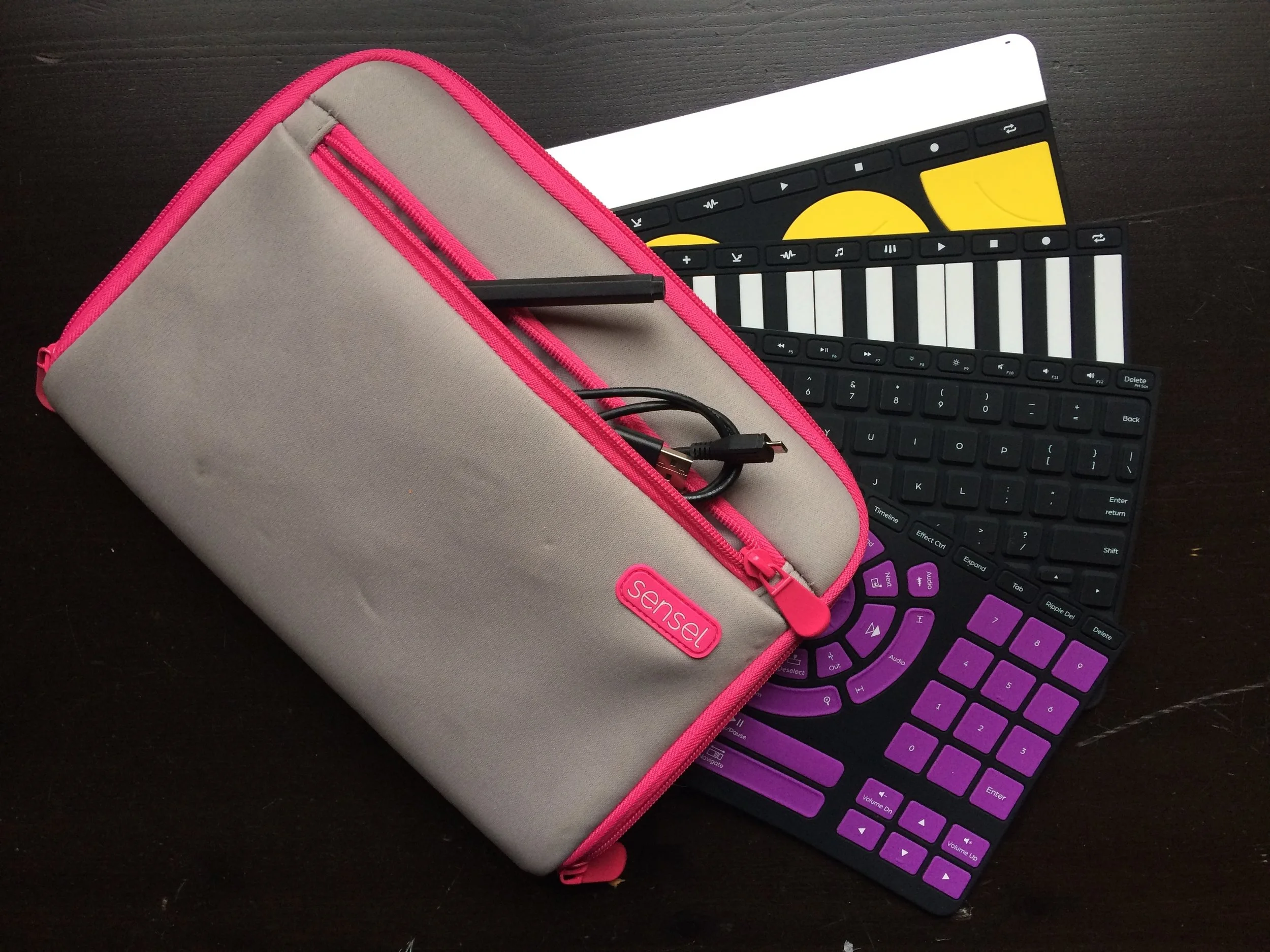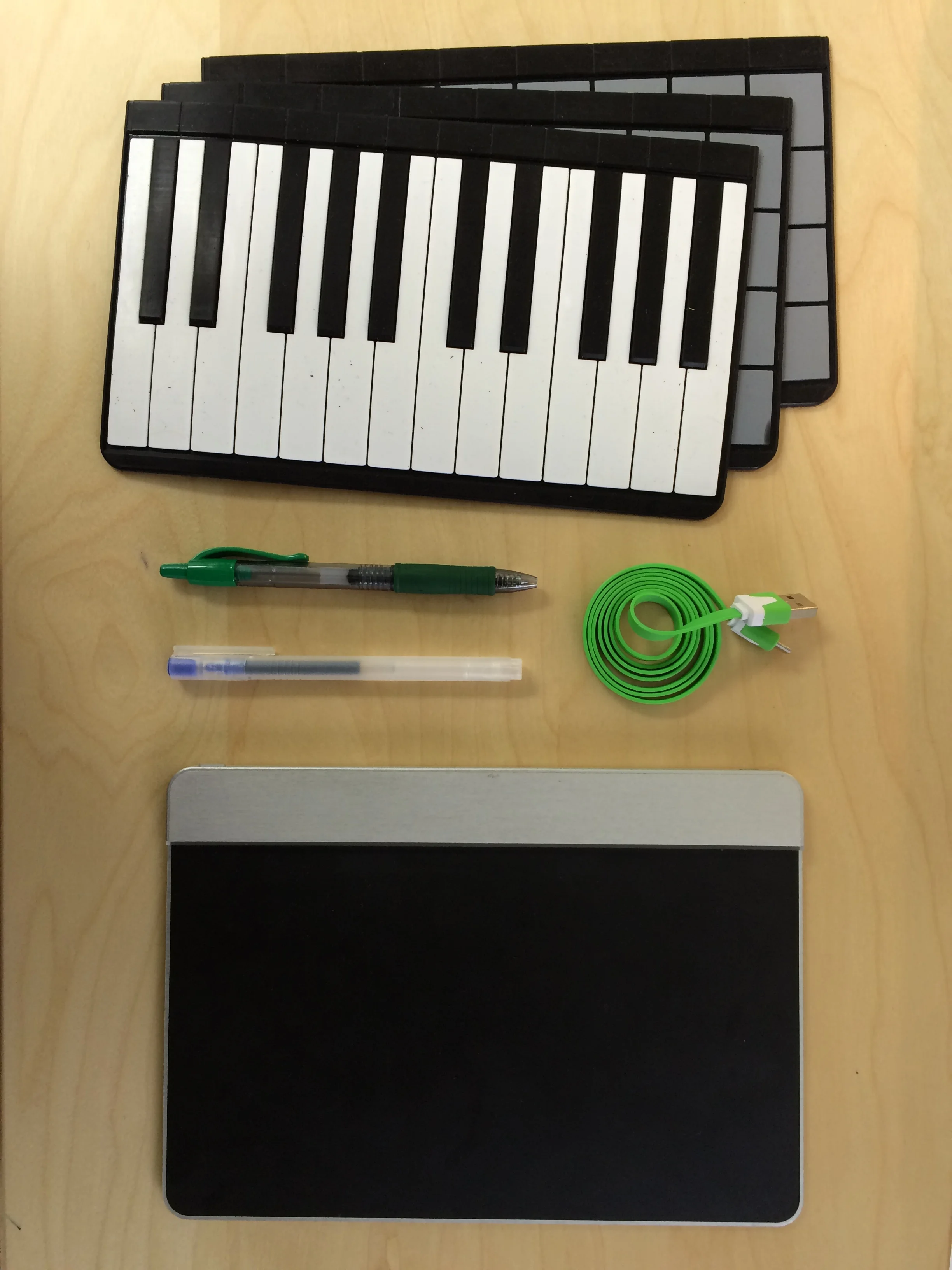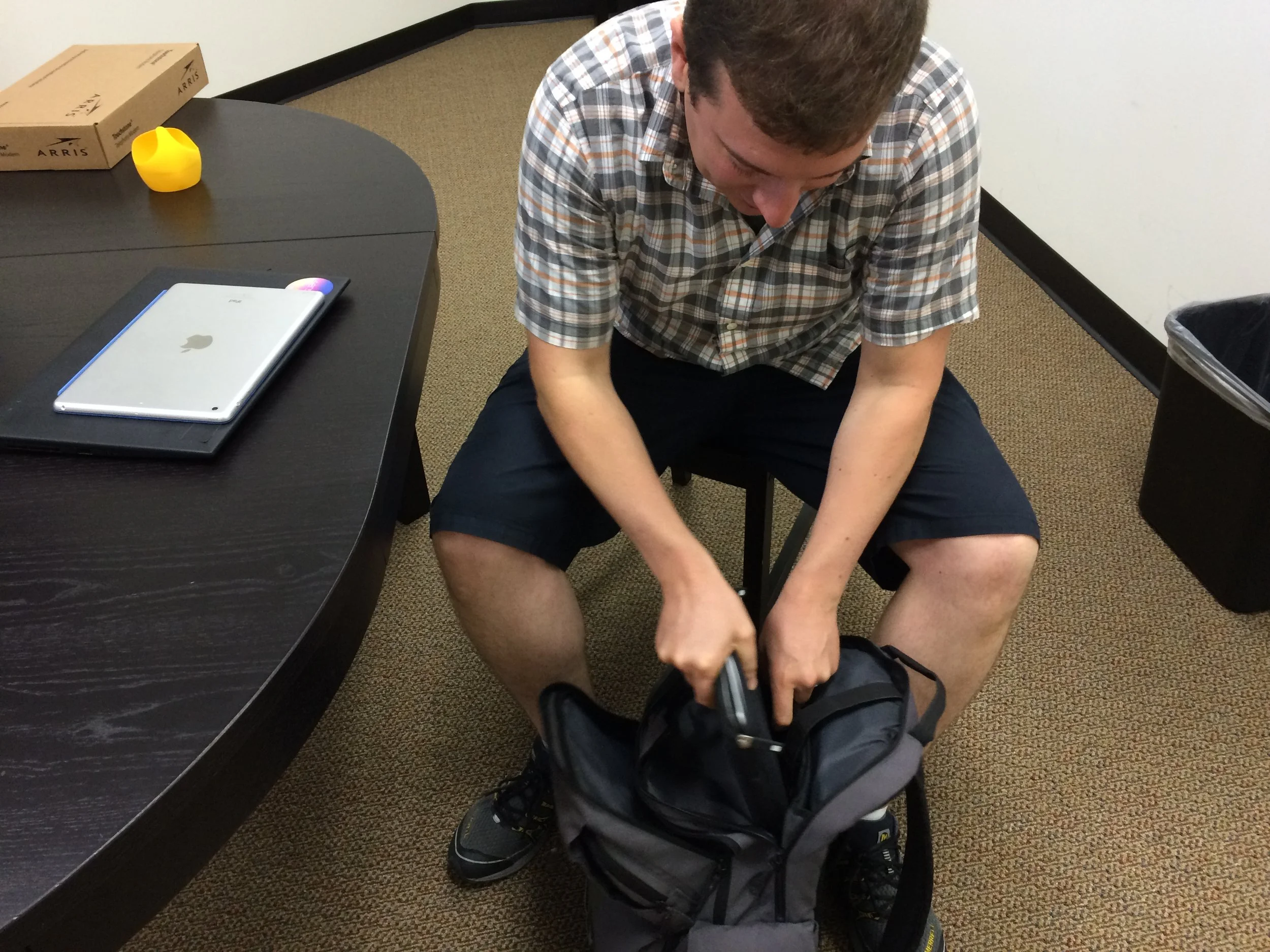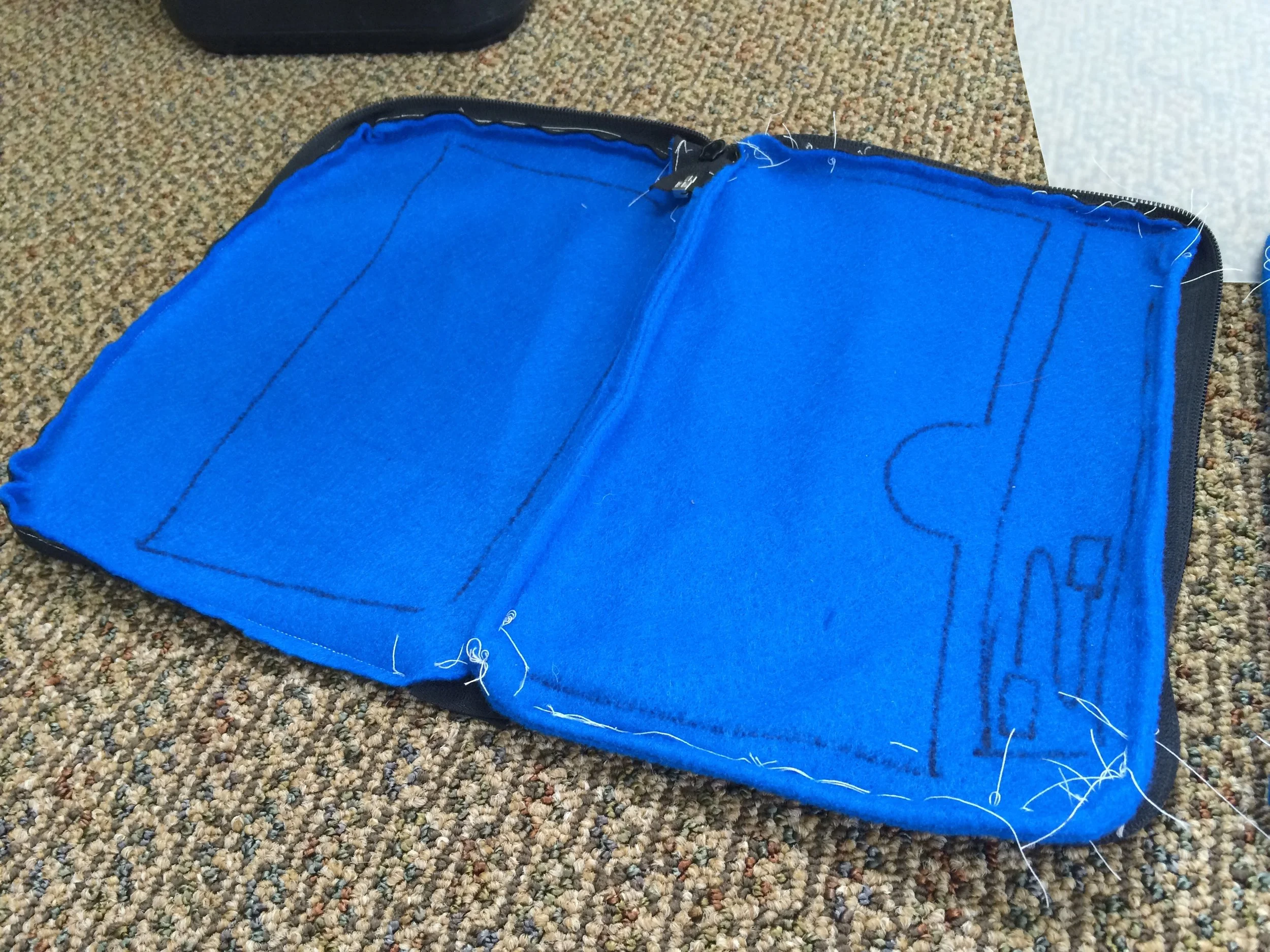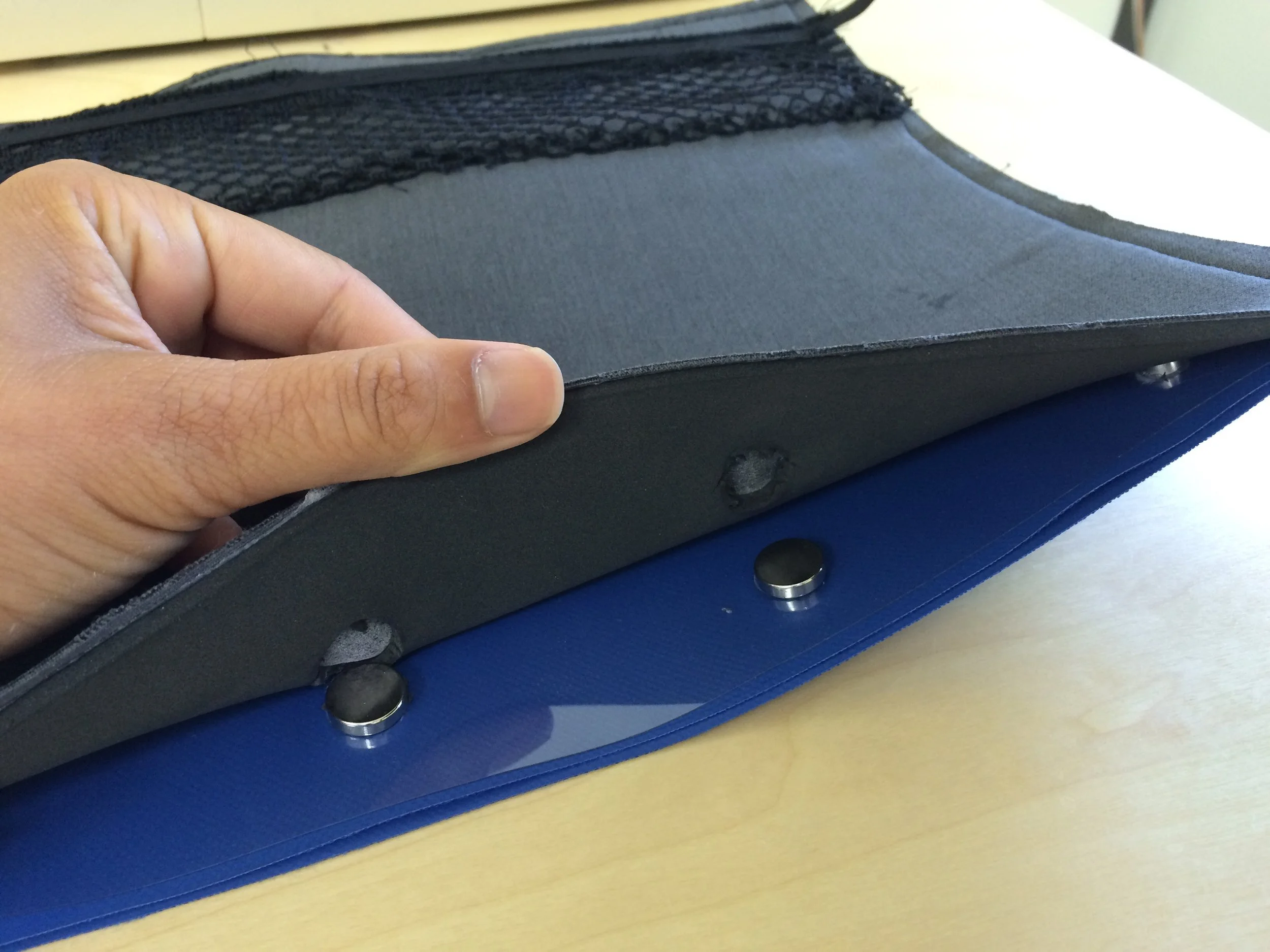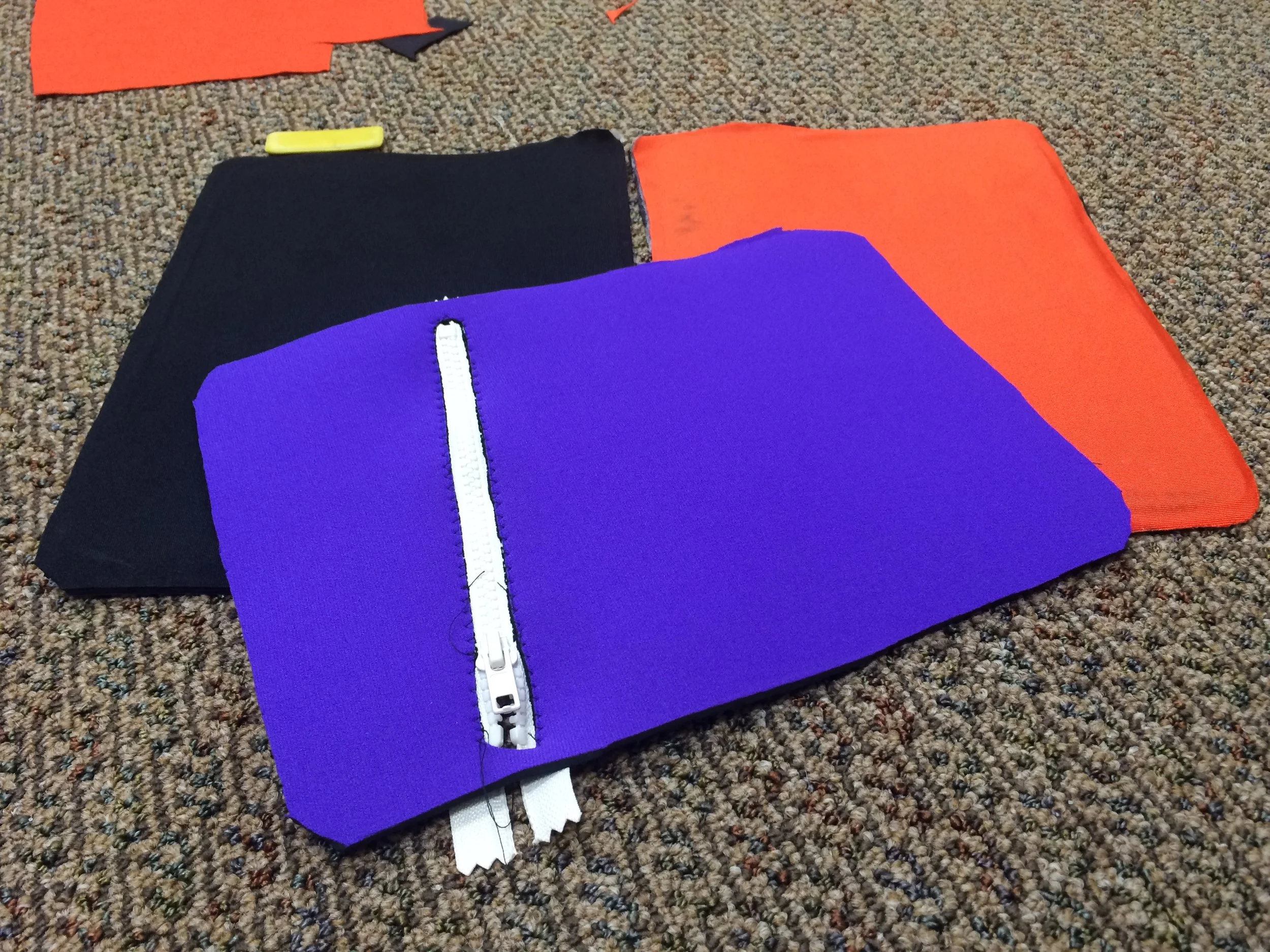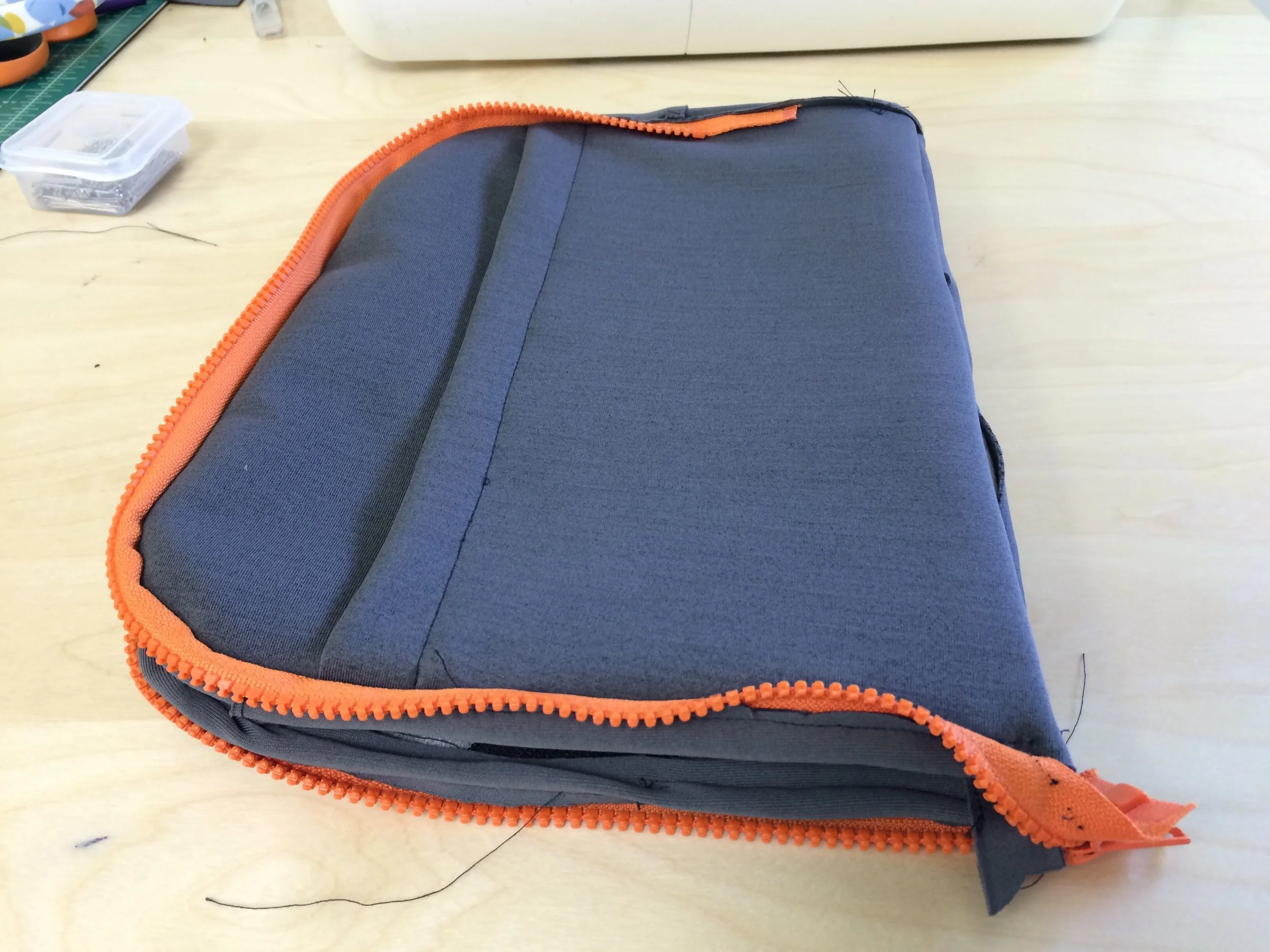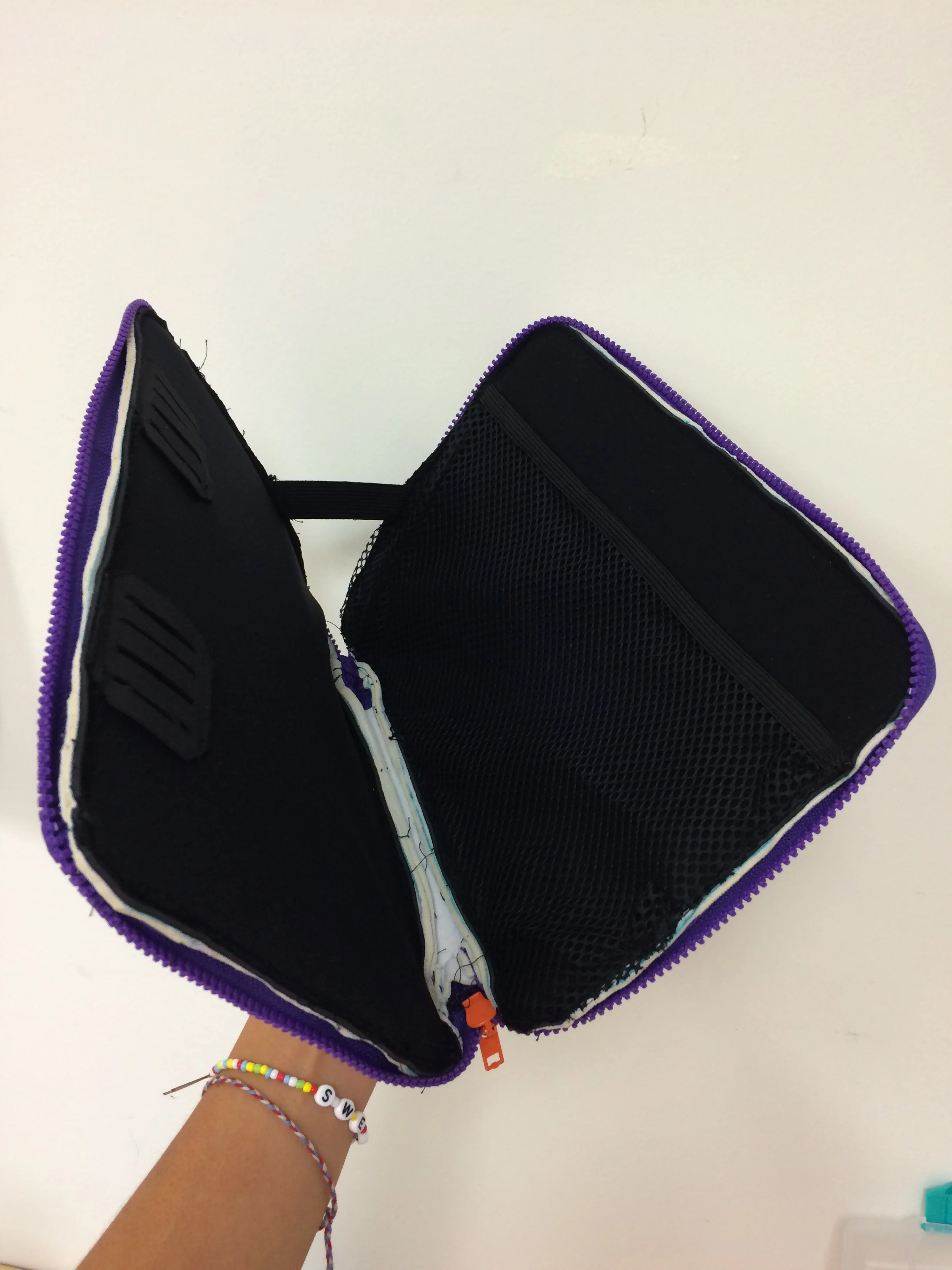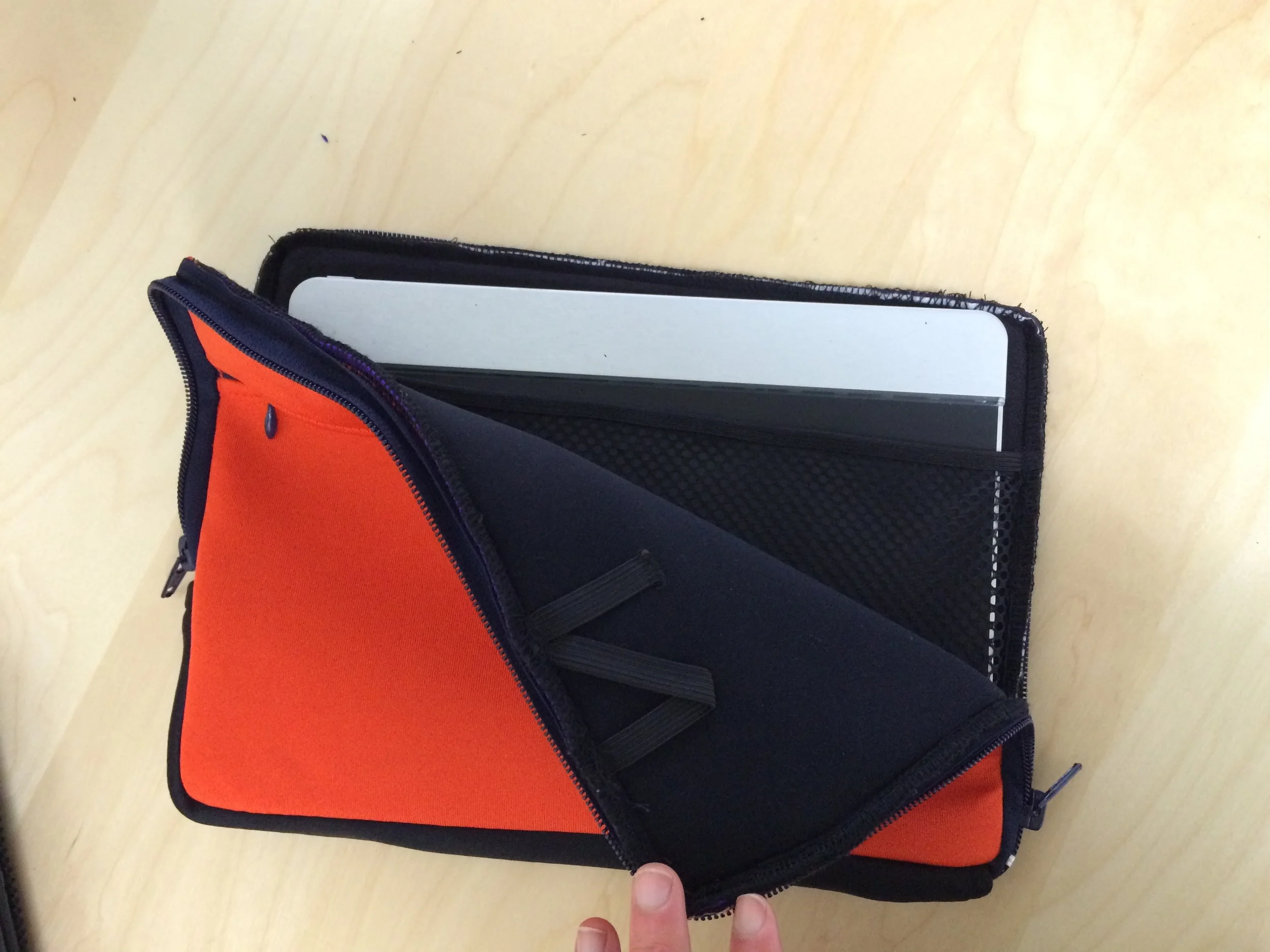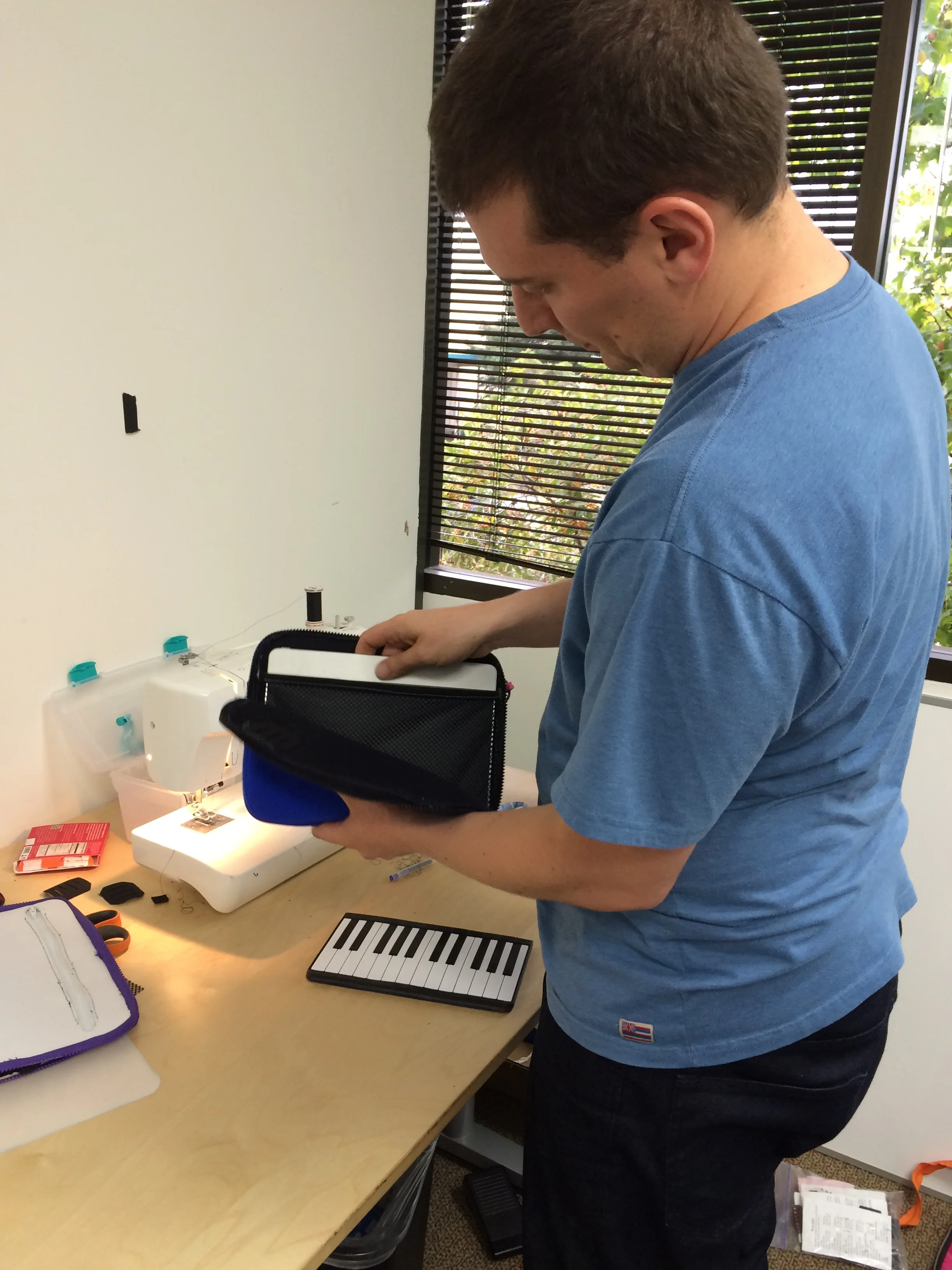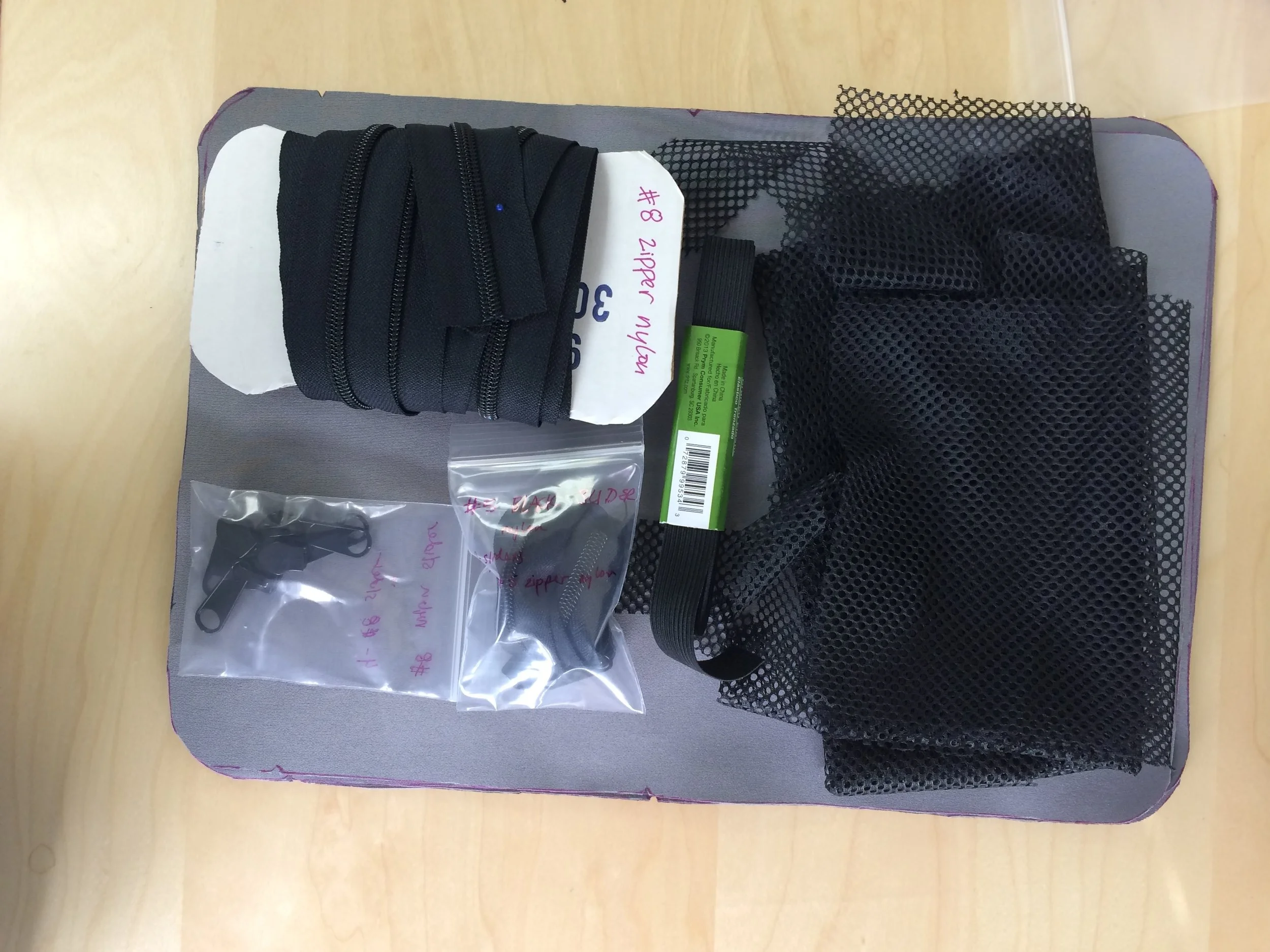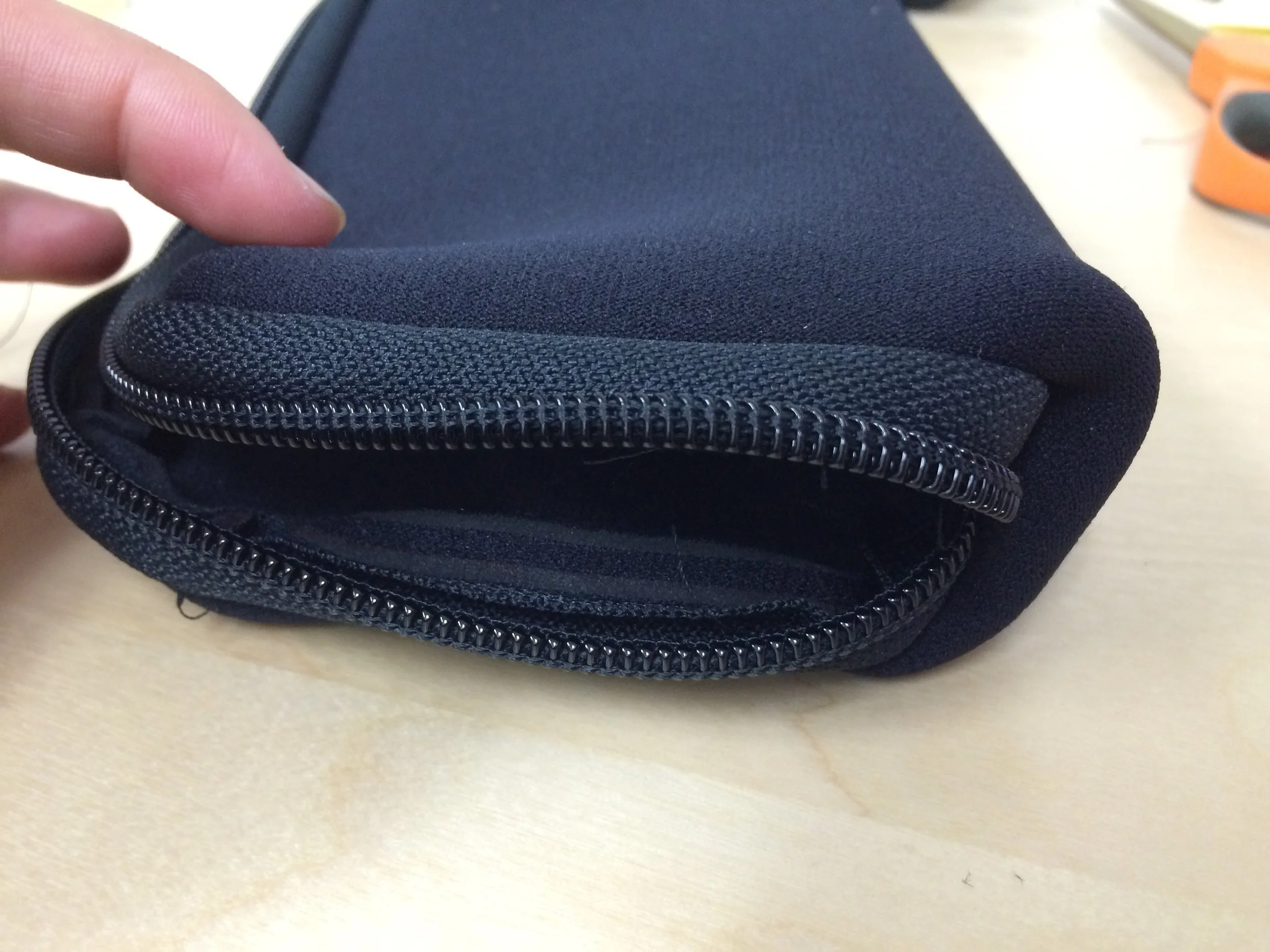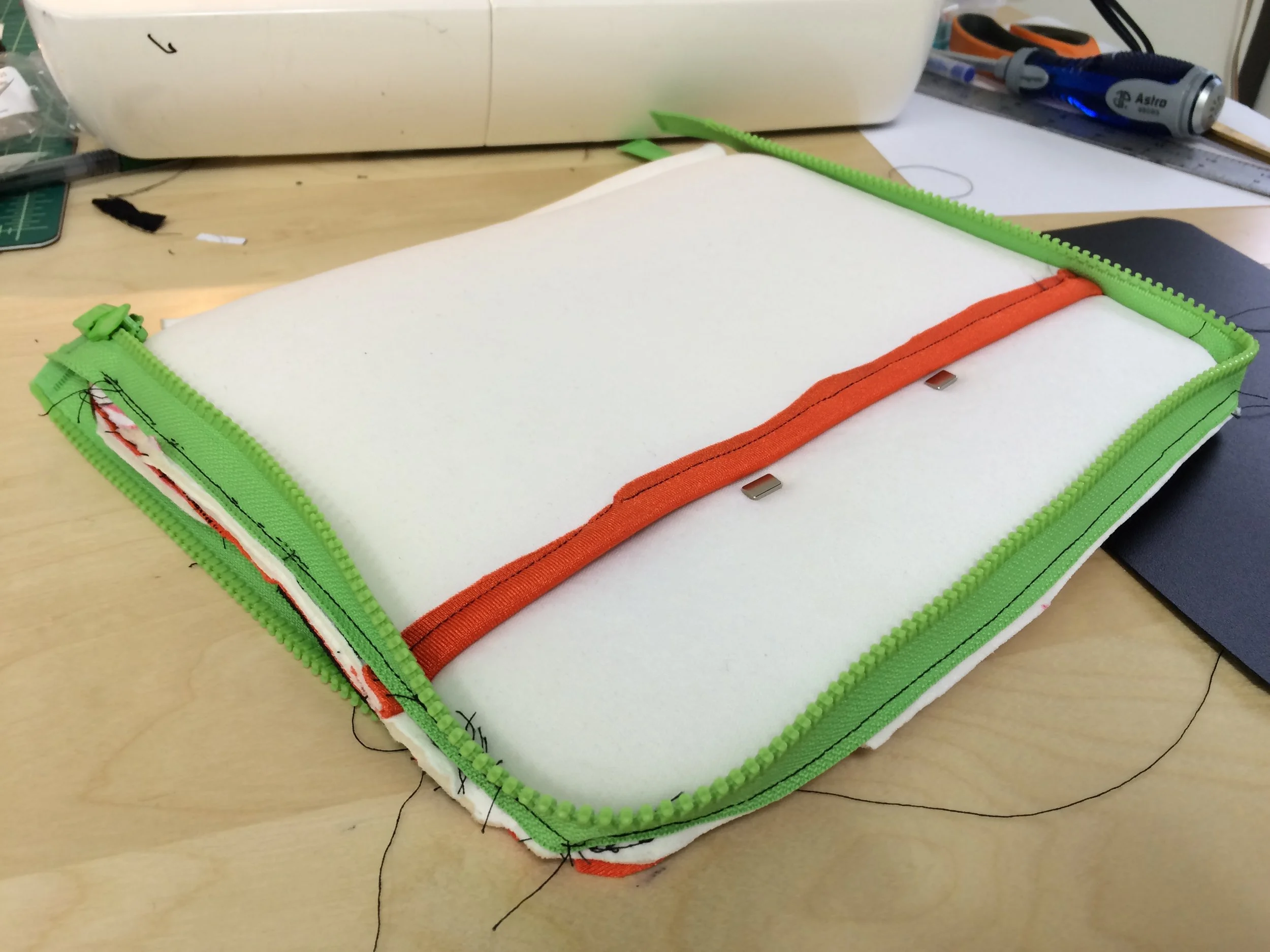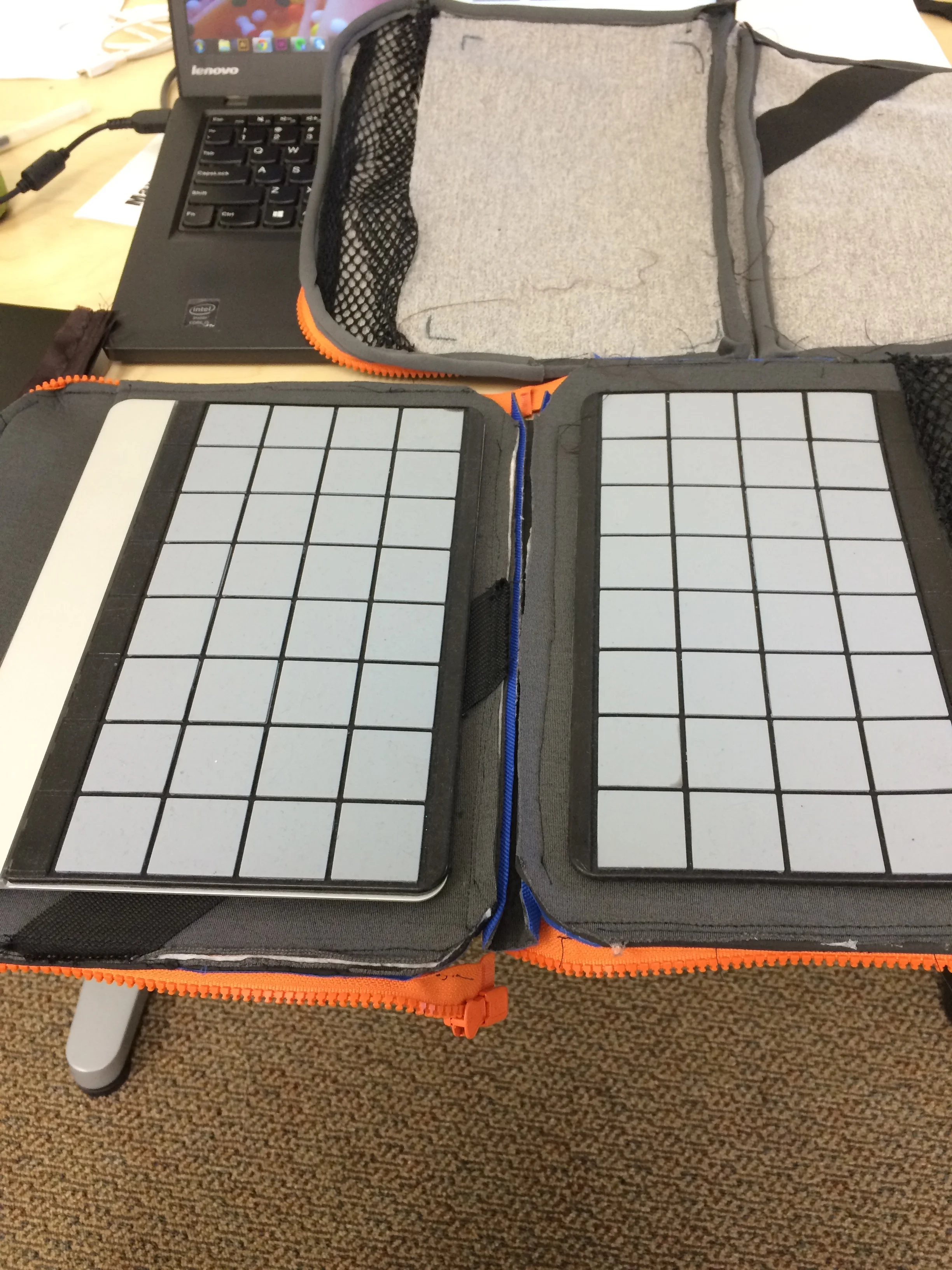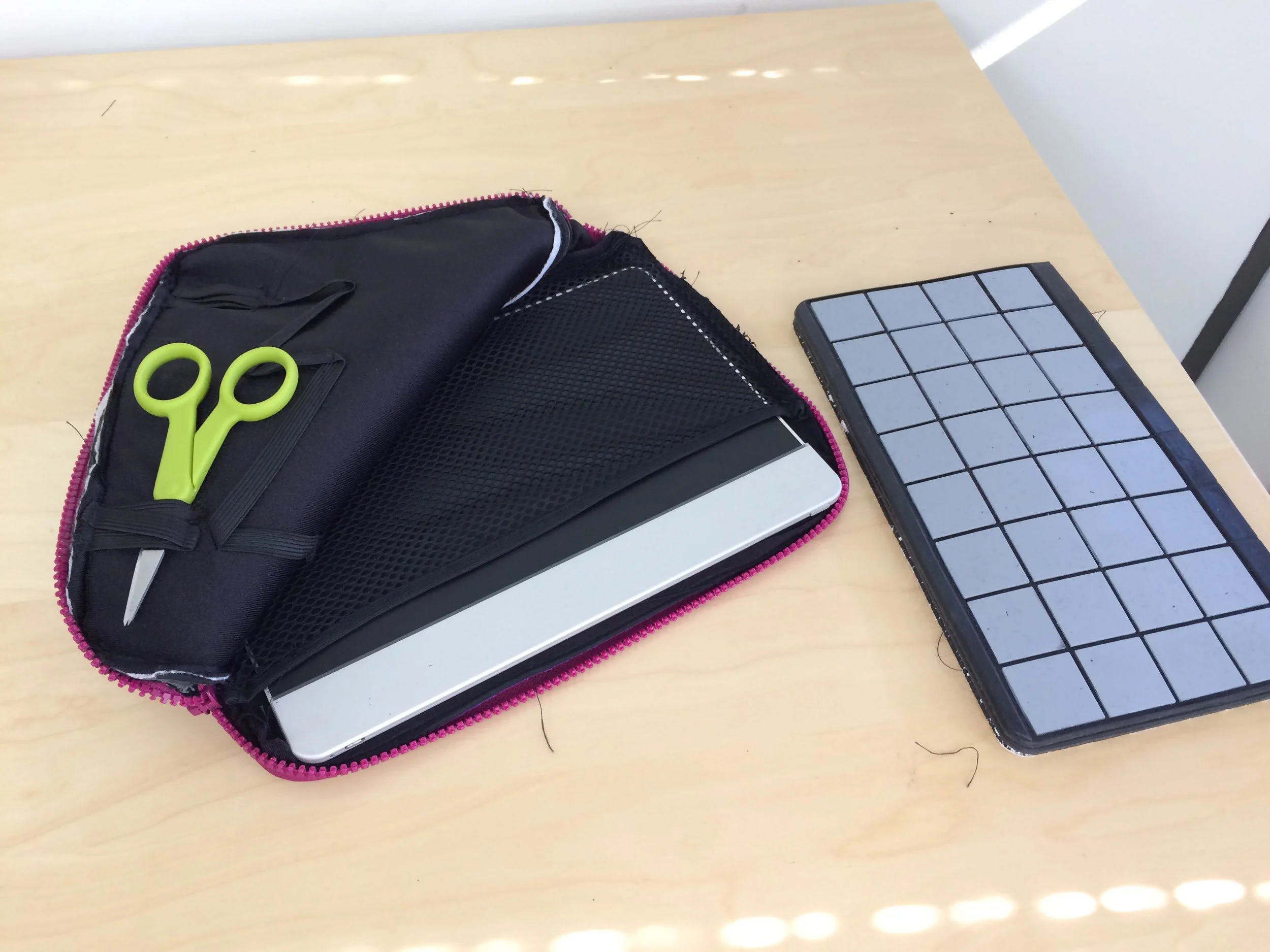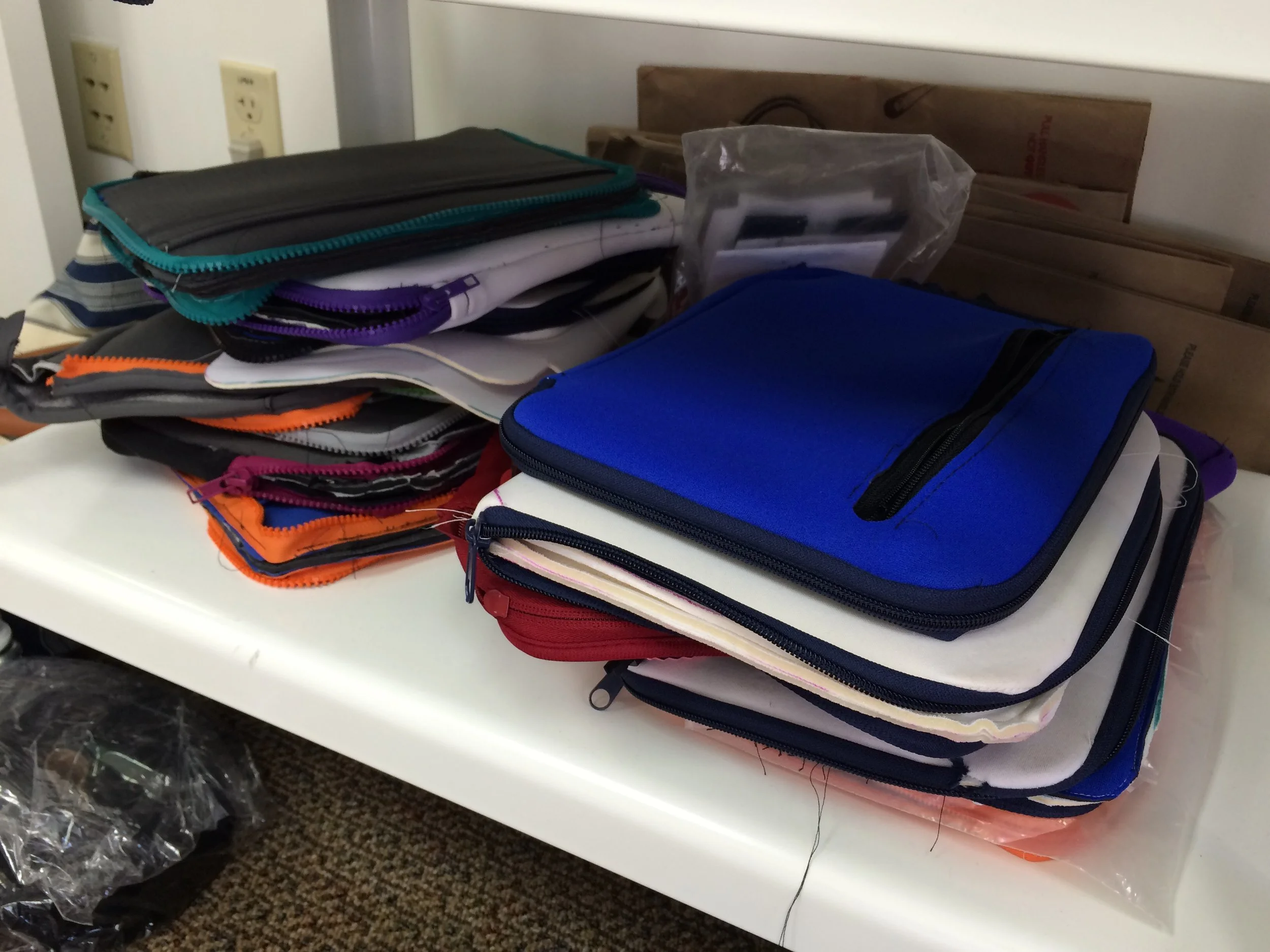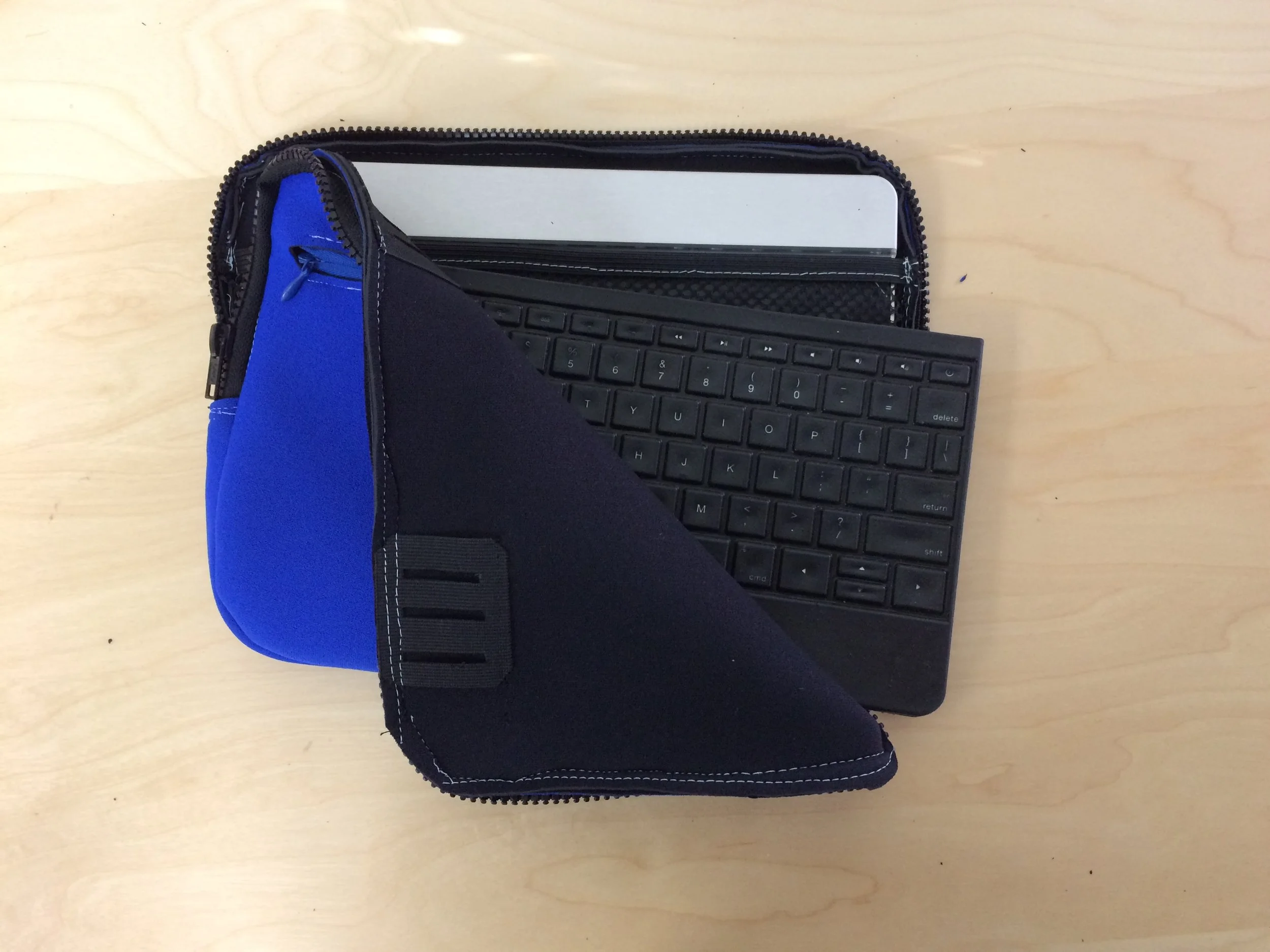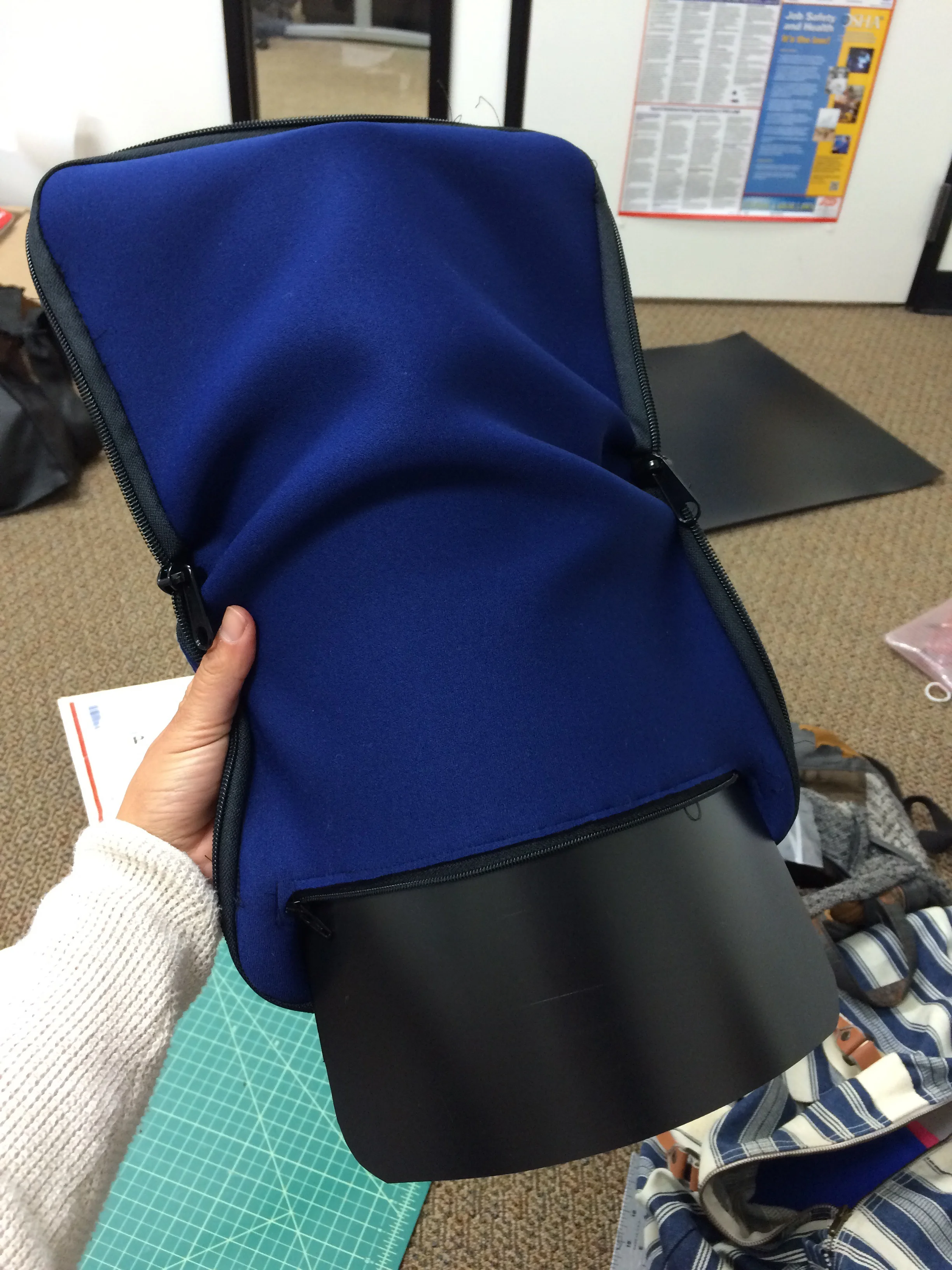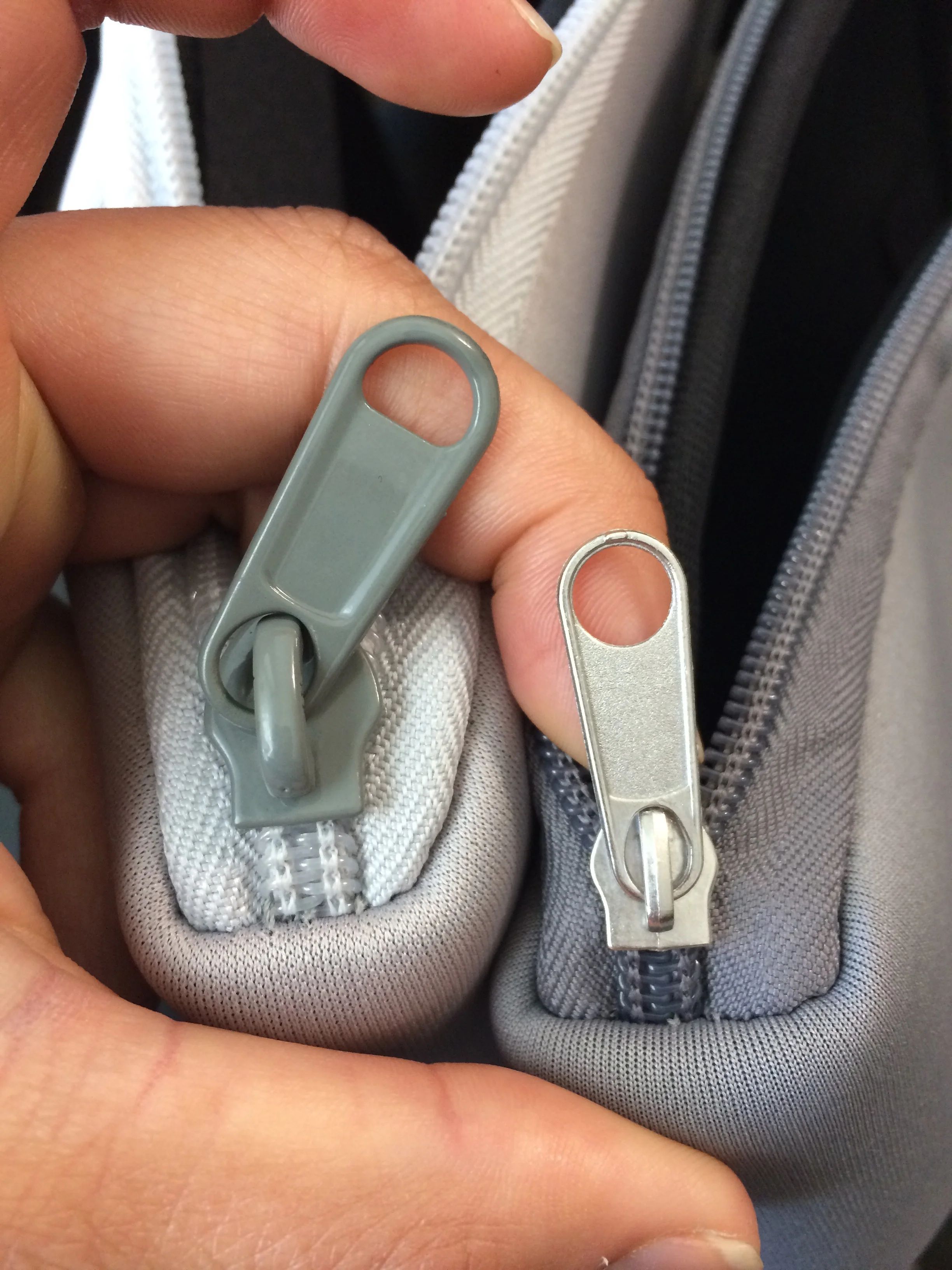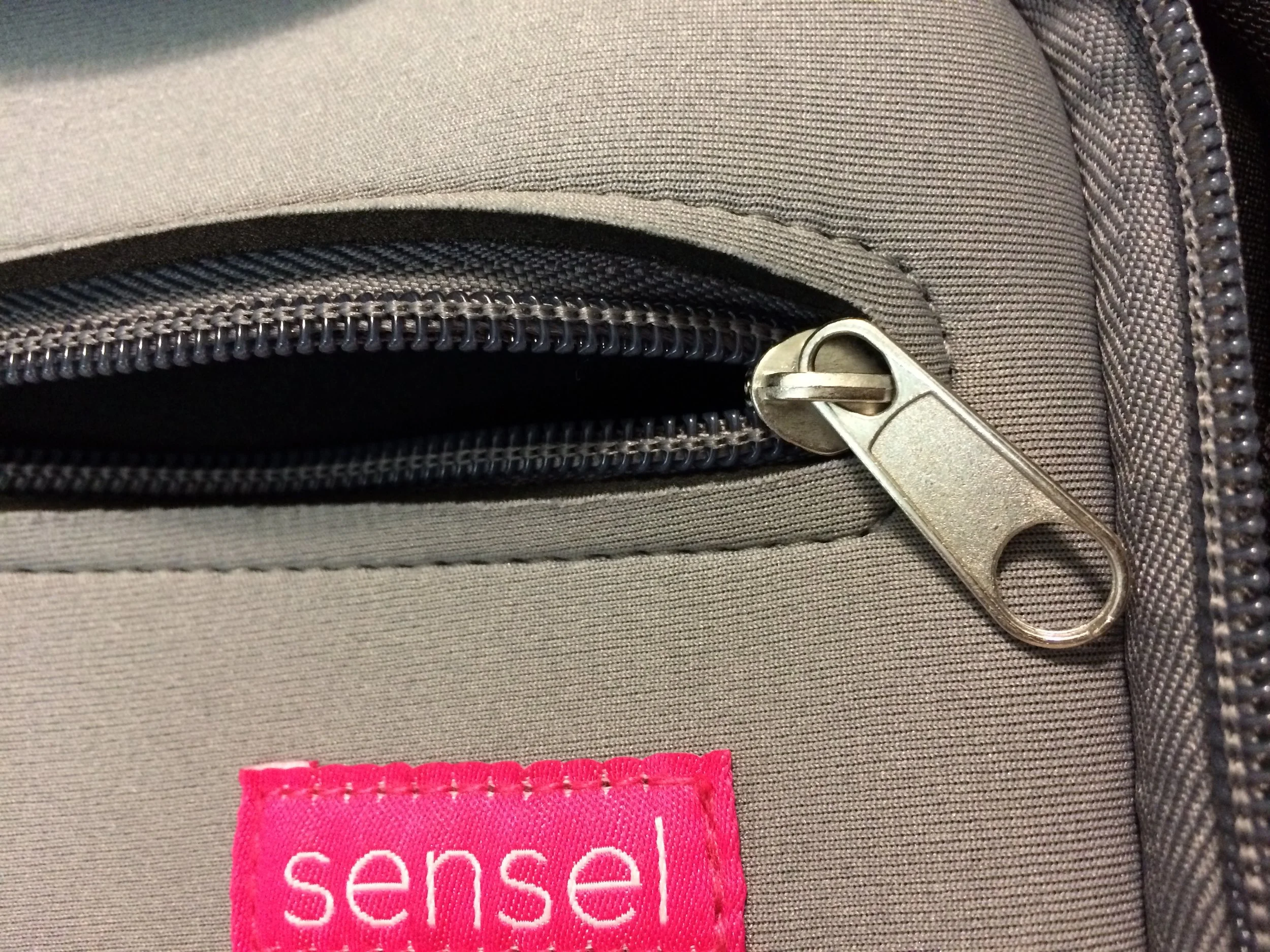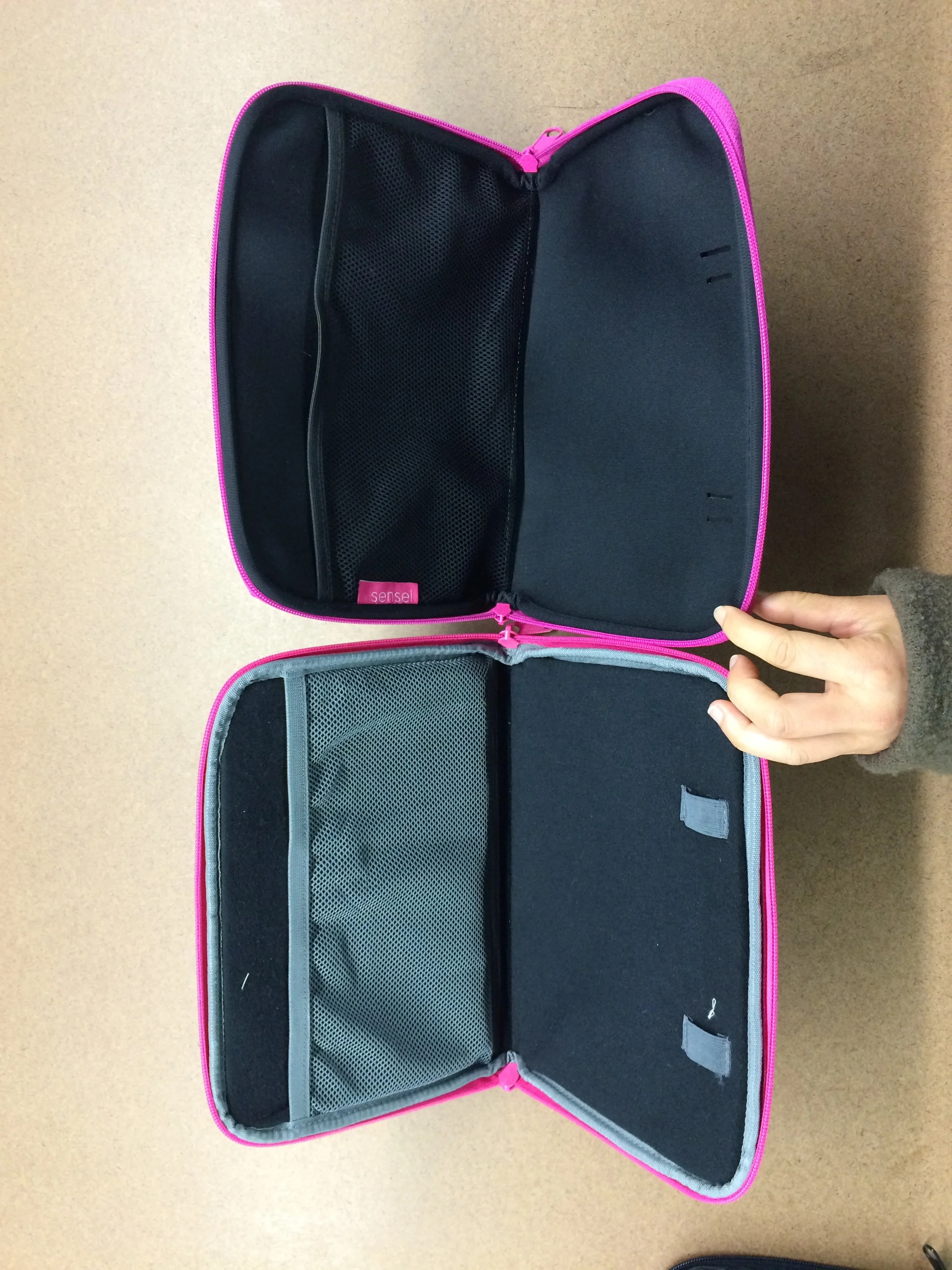Portable Carrying Case - Sensel
OBJECTIVE
Design a functional and protective travel case for the Sensel Morph, Overlays, and Accessories.
MOTIVATION
The Sensel Morph, Overlays, and accessories travel together allowing makers to drum, type, and play piano chords all on one device. We wanted to design a travel case that would not only protect the Morph and Overlays but also make the Morph and favorite Overlays more readily visible and accessible.
ABOUT
Before the Sensel Morph Travel Case, our leaders would stack the Morph, Overlays, and accessories and shove them into an iPad sleeve often having to readjust the overlays to lay flat. After traveling inefficiently and hazardously with the Morph and Overlays for many months, we realized that a carrying case was not just an accessory but a neccessary part of the Morph lifestyle. The Morph Travel Case can be purchased at the Sensel Online Shop.
1 - Market Research
What's out there and why?
Our design team researched different kinds of iPad cases to learn why certain designs had certain features (half-zip vs. full zip vs. sleeve) in order to figure out what features would be best suited for the Morph use case.
2 - Defining the Goal
What should the Morph Case Hold?
We wanted this case to be able to hold the essentials of the Morph experience.
- 1 - Morph
- 3-4 Overlays
- 1 - Stylus/Pen
- 1 - MicroUSB
I watched over and over again how co-workers packed, unpacked, and accessed components while using a regular half-zip iPad case.
Observations:
- The sleeve does not fit everything
- Ilya has to constantly check to see if overlays are flat in the sleeve
- Overlays easily bend when quickly trying to pack them
- Accessories are jammed in whatever space is left
- Ilya has to take out everything out to take access one item in the sleeve
Design Goals - We should design a case that:
- Allows easy access and storage of the Morph (hard) and the overlays (floppy). Why? Being able to quickly browse, load, and unload Overlays are essential to the Morph Experience.
- Accommodates Morph accessories from a microUSB to a pen or paintbrush. Why? A microUSB cable travels with the Morph as a backup charger so there should be a designate space for this.
- Organizes and protects the Morph, overlays, and accessories for easy travel. Why? Designated locations for Morph Experience essentials organizes the product and also reassures users that their device and accessories are safely transportable.
3 - Prototyping
I sewed 50+ prototyping from low to high fidelity to test out concepts that would satisfy our design goals. I tested with co-workers and people in the Morph community often to hear feedback patterns and gain insight into design direction. Below you’ll find a series of pictures showing sketches, felt prototypes, random fabric prototypes, prototypes using magnets, prototypes in pieces, and much more.
4 - Simplifying Features
It’s easy to imagine all the cool features that you want in a product, but choosing the most essential ones and making a scalable product is a whole other design problem. I could talk about all the little steps during our design process, but instead, I’ll share just a couple ideas and problems that we were grappling with during our prototyping process, and how we tackled each one.
Feature 1: Magnets
At the beginning of prototyping, I was exploring using magnets in the case to hold the Morph and overlays in place in the case. I thought this fit with the “snap-on” overlays theme (the Morph and the Overlays have magnets embedded in them) and would reduce the number of straps and pockets. However, when thinking about the manufacturing process of embedding magnets in the case just for a 2000 unit case production, having that extra feature complicated the design more than added to it. In addition, we got feedback that users thought that strong magnets might demagnetize and damage their other electronic devices.
2. Basic Structure.
Initially, we thought that it would be great if a user could open up the case, lay it flat on a table, and be able to see the Morph, overlays, and accessories in an organized way. A key insight that we heard again and again was that users would probably not open up the case all the way on a day-to-day use case. Some envisioned easy access and storage to the Morph, along with being able to store their accessories (pen, paintbrush, ipad). This made me rethink our original idea and create a case with one main pocket (like a sleeve) and an internal pocket instead of a pocket on each face of the case that opened up. I’ll call this the “single corner” case. It created one large universal pocket with an internal separating pocket for the Morph that could easily hold the flexible overlays without the overlays bunching up.
3. Usability
One design criteria that we used to measure the usability of our case was being able to load and unload the case without a table. Think about the last time you used an iPad or computer sleeve. You probably held it open with one hand while on a hart flat surface, and used your other hand to slide your device in the case. We wanted this to be a practical case, so we wanted our design to be functional in an “extreme” situation. Loading the soft overlays were much more of a constraint than loading the Morph into the case.
Some other problems with the “single corner” case were having too many pieces to sew together, having multiple plastic inserts, and having an unclear way to hold and use the case. What we didn’t fully understand at this point was that the case “should be” a hard case (plastic insert). Why? It’s difficult to store flexible overlays in a soft case. After realizing this, we realized that a binder/book like structure would be much more appropriate for the Morph. In addition, the hard shell would allow a user to hold the case in one hand and load the Morph and overlays on-the-go.
Final Prototypes
This final prototype was created in Oakland, CA and shipping off to China to get quoted.
5 - Troubleshooting with Overseas Manufacturing
There were a lot of iterations involved in communicating with manufacturers overseas. It was really important for us to send them clear pictures, physical samples of colors, and labeled diagrams to communicate the details we wanted to refine.
We initially decided to start with grey and bright pink accents to match the bright colors in our logo. Later, after shipping the first round of case, we realized that a grey color palette for the travel case suited the Morph more because it let the colors on the Morph and Overlays themselves shine more.
